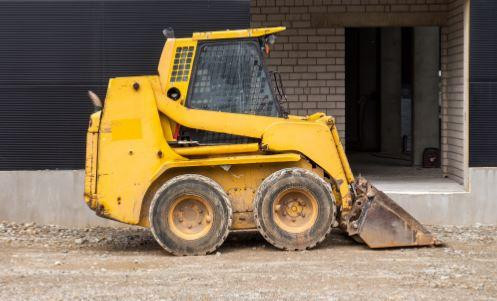When embarking on home renovation projects, the question of whether to hire a Bobcat loader often arises. These versatile machines can significantly ease the burden of heavy manual labour and speed up the renovation process. In this article, we’ll explore the advantages oaf hiring a Bobcat loader for home renovations, helping you decide if it’s the right choice for your project.
Ease of Landscaping and Site Preparation
One of the primary benefits of a Bobcat loader during home renovations is its ability to efficiently prepare and landscape your property. Whether you’re looking to clear land for an extension, level ground for a patio, or dig trenches for utilities, a Bobcat can handle these tasks with ease. The versatility of attachments available means that these machines can be adapted for a wide range of specific jobs, reducing the need for manual shovel work and saving valuable time.
Material Handling and Removal
Renovation projects often involve the removal of large amounts of waste material, such as old concrete, garden waste, or construction debris. A Bobcat loader, equipped with a bucket attachment, can easily gather and remove these materials, keeping your site clean and organised. Additionally, if you’re receiving deliveries of new materials, such as soil, gravel, or sand, a Bobcat can quickly and efficiently move these to the desired location on your property.
Cost-Effectiveness
Hiring a Bobcat loader can be a cost-effective solution for your renovation project. It reduces the need for manual labour, thereby cutting down on the time and manpower needed to complete the job. With Ryno Hire, you have the flexibility to hire a Bobcat for the exact duration of your project, ensuring you only pay for what you need. This can be particularly advantageous for DIY renovators looking to manage their budget effectively.

Safety and Efficiency
Bobcat loaders are designed with safety in mind, offering features that protect the operator and those around the work site. By choosing to hire a Bobcat, you’re also gaining access to modern, well-maintained machinery that meets all safety standards and regulations. This peace of mind allows you to focus on the task at hand, knowing that you’re using equipment that is both safe and efficient.
Why Choose Ryno Hire for Your Bobcat Loader Needs?
At Ryno Hire, we specialise in providing high-quality equipment for all types of renovation projects. Our loaders are maintained to the highest standards, ensuring reliability and performance when you need it most. With competitive pricing and expert advice from our team, we make the process of hiring a loader straightforward and hassle-free.
Hiring a Bobcat loader for home renovations can offer significant advantages in terms of efficiency, cost, and safety. Whether you’re preparing your site, handling materials, or clearing debris, a Bobcat can provide the power and versatility needed to get the job done. If you’re considering a Bobcat for your next renovation project, contact Ryno Hire to find out how we can assist you in making your project a success.

